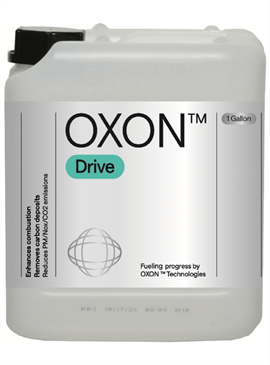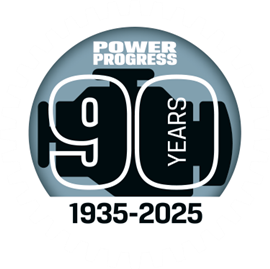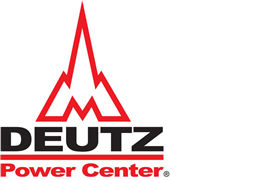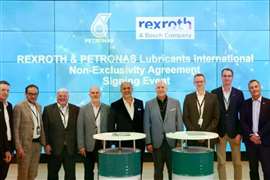Read this article in French German Italian Portuguese Spanish
Oxon Technologies aims to improve combustion with fuel modifier
15 July 2025
Andrew Lowenstein of Oxon Technologies explains how the company’s modifier works and what customers can expect to achieve.
“No, it’s not an additive, it’s a modifier,” explains Andrew Lowenstein, CEO of Oxon Technologies. “And while we offer a range of products, we think of ourselves more as a technology development company than a product supplier.”
At this point, it’s worth taking a step back to explain exactly what we’re talking about. Oxon Technologies is the developer and producer of Oxon Tech, a fuel modifier designed to attract oxygen and repel nitrogen in an engine combustion chamber, reducing the energy required to initiate combustion. That delivers a highly efficient ignition event that can cut both carbon emissions and fuel consumption.
Specifically, the company states that using the Oxon products can result in about 21% less CO2e and 60% less NOx being produced, while reducing fuel consumption by up to 15%. Diesel particulates are also reduced by about 90%.
There are a range of Oxon products tailored to individual applications, including Oxon Drive for road transport and Oxon Build for construction, together with Oxon Mine and Oxon Farm respectively for mining and agricultural equipment. The company is also developing Oxon Fly and Oxon Navigate for aircraft and shipping.
How it Works
Lowenstein says that the company was founded about 10 years ago on the back of an idea that the fuel combustion process is effectively stifled by using only atmospheric air and could be improved with a higher percentage of oxygen in the air/fuel mix. Additionally, limiting the influence of nitrogen – which makes up about 78% of our air – could prevent it from negatively affecting the reaction and reduce NOx output.
 The Oxon Drive packaging container. (Photo: Oxon Technologies)
The Oxon Drive packaging container. (Photo: Oxon Technologies)
To achieve this, the Oxon modifier essentially initiates a process that creates a polarity carrier which brings oxygen and hydrocarbon fuel together using an electromagnetic bond.
“The standard approach is to add octane to gasoline and cetane to diesel fuel to get more power,” explains Lowenstein. “That changes the nature of the fuel and the chemical reaction. Then there are detergents and lubricity agents, but all of these are chemical approaches to improve combustion.
“Instead of that, we’re working with polarity. We’re adding very small amounts of polarity to fuel via the carrier, which is a chemical. But to be exact, the way that improves combustion is through intermolecular forces. It changes the polarity of the hydrocarbon molecules so they are more attractive to oxygen.”
In practise, the possibly trillions of hydrocarbon fuel particles involved in each combustion event are more thoroughly burned due to the excess of oxygen attracted to them through the change in polarity, releasing more power and reducing residues – otherwise known as emissions.
A Different Solution
That the Oxon modifiers work for both gasoline and diesel engines highlights that the products are doing something very different to a standard additive. Beyond this, the products have been tailored for individual applications by adjusting the ratio of active particulates in the formulations to suit the anticipated combustion cycles.
“There are different products for high-speed heavy-duty engines than for medium-speed models,” explains Lowenstein. “The product is a blend of ethanol, ionic solutions and a free radical provider. Those are fixed – for want of a better word – with an electromagnetic charge. The ionic solutions and the method for fixing the charge are the proprietary and patented elements of the product.”
He continues by saying that as Oxon has developed the products, not only have the different application types impacted the product formulations, but also the methods used to add and regulate fuel. He says that this is particularly evident in the automotive and truck markets, with different OEMs setting engine control units to suit their individual designs and methodologies.
Better Service Intervals
Lowenstein describes the product as “changing the combustion profile.” But in operation, he says that the products help to produce the same amount of power with a lower volume of fuel.
 Andrew Lowenstein. (Photo: Oxon Technologies)
Andrew Lowenstein. (Photo: Oxon Technologies)
Within that, he notes that service intervals for engines using the Oxon products can be extended as there is a reduced amount of carbon soot being produced. He goes on to recount a situation where Oxon product was introduced halfway through a large construction project in the United States. Particulate warnings from machine telematics systems dropped from 4,600 instances in the month prior to product introduction to just 197.
“That means the engine was releasing less particulate matter into the exhaust stream and also into the oil. We increased uptime between servicing calls by 150 hours. Of course, most machines have diesel particulate filters and the emissions are very clean. But the engine is still producing particulate matter due to combustion. Our solution cleans the air not between the engine and the exhaust, but in the engine itself.”
Past History
The proverbial elephant in the room is that there have been truckloads of products with similar claims; more power, reduced emissions, better fuel economy, longer engine life.
“Will our products deliver the same results for every customer?” says Lowenstein rhetorically. “No. The results will vary due to different factors, including work cycle. In a diesel engine, the absolute best application is a long-haul truck doing 65 mph on cruise control.”
He adds construction machines will also deliver around a 12% savings, although machines doing constant work will perform better than those which do short bursts of work.
“There are a lot of additives and some are snake oil; we live in the world we live in,” says Lowenstein. With a slightly frustrated smile he continues: “There’s a joke that ‘no snakes were harmed in the production of our product’. We know that there are more mechanical approaches to doing what we do, but that’s not the same – we modify the physical attributes of hydrocarbon fuels to make them perform better.”
Editor’s Note: this article first appeared in the April-June 2025 issue of Power Progress International.
POWER SOURCING GUIDE
The trusted reference and buyer’s guide for 83 years
The original “desktop search engine,” guiding nearly 10,000 users in more than 90 countries it is the primary reference for specifications and details on all the components that go into engine systems.
Visit Now
STAY CONNECTED




Receive the information you need when you need it through our world-leading magazines, newsletters and daily briefings.
CONNECT WITH THE TEAM













